ISSN ONLINE(2319-8753)PRINT(2347-6710)
ISSN ONLINE(2319-8753)PRINT(2347-6710)
| Milind V. Mohod 1, Nikita A. Karwa 2 Assistant Professor, Department of Civil Engineering, PRMIT & R, College, Badnera, Maharashtra, India |
| Related article at Pubmed, Scholar Google |
Visit for more related articles at International Journal of Innovative Research in Science, Engineering and Technology
A common type of vertical geometrical irregularity in building structures arises from abrupt reduction of the lateral dimension of the building at specific levels of the elevation. This building category is known as the setback building. Various researchers have studied the behavior of setback buildings by taking into account different approaches, which revolve mainly around geometric, mass, stiffness and different methods of seismic analysis. But the value of critical setback ratio for which the structure is less prone to earthquake forces has not been reported. Hence, a need has risen to study and specify some improvements in codal provisions for understanding the behavior of setback buildings. Reference structure results were adopted for validation of results obtained from all these models, which helped us to reach the desired output of the task. Nodal displacement and storey drift criteria was considered for ascertaining the optimum value of critical setback ratios. The optimum value of setback ratio came out to be RA=75% and RH=6/5, where the nodal displacement and storey drift values are affecting structure in negligible amount as in comparison to other setback ratio values. Hence, as we go through seismic code, the revision of seismic codes provisions for geometric vertical irregularities seems to be essential to stipulate more restrictive limits or apply more accurate analytical procedures to predict the seismic performance of setback structures under the seismic excitations, especially for structures with critical setback ratios.
Keywords |
| Setback buildings, Setback ratios, IS 1893, Vertical irregularity, Storey drift. |
INTRODUCTION |
| A common type of vertical geometrical irregularity in building structures, needed from various functional and aesthetic architecture requirements, is the presence of setbacks i.e. the presence of abrupt reduction of the lateral dimension of the building at specific levels of the elevation. This building category belongs under setback building. In particular, such a setback form provides adequate daylight and ventilation for the lower storey in an urban locality with closely spaced tall buildings. This type of building form also provides for compliance with building bye-law restrictions related to ‘floor area ratio’ (practice in India). Setback buildings are characterized by staggered abrupt reductions in floor area along the height of the building, with consequent drops in mass, strength and stiffness. Height-wise changes in stiffness and mass render the dynamic characteristics of these buildings different from the ‘regular’ building. The increasing number of damage after seismic ground motion has provided strong evidence that setback buildings exhibit inadequate behavior though they were designed according to the current seismic codes. This inferior seismic performance has been attributed to the combined action of structural irregularities i.e. to the combined non-uniform distribution of mass, stiffness, and strength along the height of setback frames, and to concentration of inelastic action at setback level. [1]. So effective procedures to estimate seismic deformation demands i.e. damage in setback frames is certainly needed. Many investigations have been performed to understand the behavior of irregular structures as well as setback structures and to ascertain method of improving their performance. But it is seen that most of the previous studies were based on elastic response of simple structural system and were not satisfied the current code requirements. So there is a need to study the seismic performance of setback structures designed by recent codes the adequacy of current seismic design requirements for setback buildings, and new design methods to improve the seismic response of setback buildings. It is possible to evaluate the seismic performance of setback building accurately using STAAD. Pro. software. This is the primary motivation underlying the present research work. |
METHODOLOGY & MODELING |
| 1) Methodology: The methodology adopted to perform the seismic evaluation of the building requires an understanding of equivalent lateral force procedure also recognized as equivalent static procedure. In deep, knowledge of STAAD Pro software is required as the building was modeled in STAAD Pro and post analysis data obtained from it has been used in the design of the structure. The seismic stability of the structure under the various load combinations in accordance with IS 1893-2002 (part 1). |
| 2) Modeling: The present study is based on frames which are plane and orthogonal with storey heights and bay widths. Different building geometries are taken for the study. These building geometries represent varying degree of irregularity or amount of setback. Nine different categories of setback buildings, ranging from 4 to 4 bays (in X and Z direction) with a bay width of 4mX3m and 11 bays in Y direction were considered for present study. |
| It should be noted that bay width of 4m – 6m is the usual case, especially in Indian and European practice. Similarly, same height categories were considered for the study, G+10, with a uniform storey height of 3m. Altogether 10 building frames with different amount of setback irregularities due to the successive reduction of Ra = 25% for (S1) builings, Ra = 50% for (S2) ) builings and Ra = 75% for (S3) ) buildings were selected. The regular frame (R), without any setback, is also studied. The structures are modelled by using computer software STAAD. Pro. The earthquake ground motion is defined by the equivalent static analysis available in the software. The column sections defined for the frames satisfy both the requirements for strength and stiffness. All the selected models were designed with M-20 grade of concrete and Fe-415 grade of reinforcing steel as per Indian Standards. |
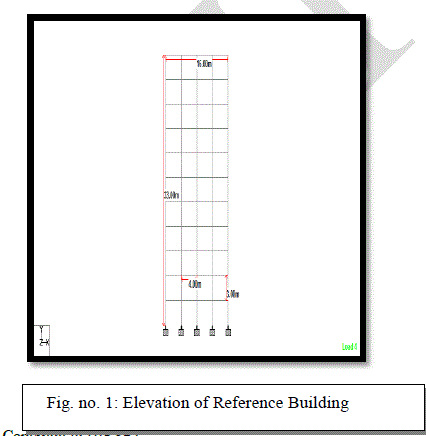 |
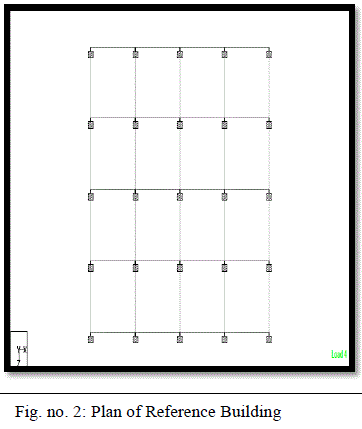 |
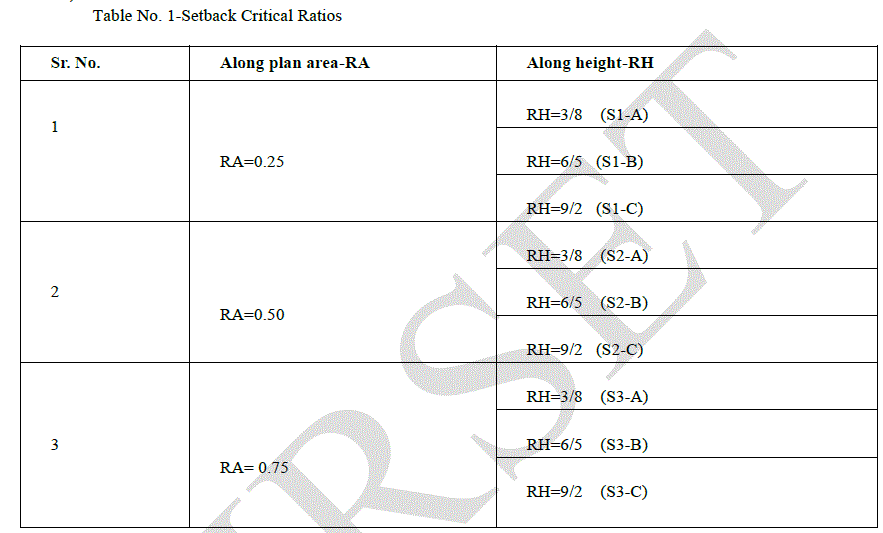 |
| According to the above setback ratios 10 models were made and earthquake analysis was performed. |
| Results & Discussion: |
| Results are presented for all the ten models in graphical form. For various setback ratios (S1, S2, S3) the values of nodal displacement and storey drift in both X and Z direction are compared with reference (R1) normal structure. i) Nodal Displacement in X & Z direction: |
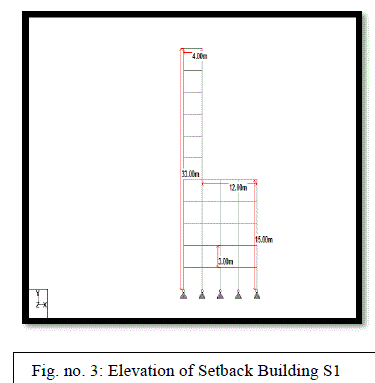 |
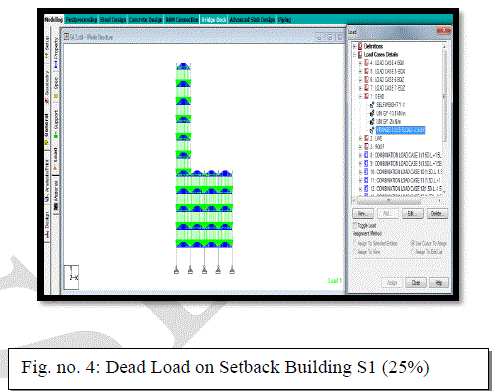 |
| In an effort to understand the earthquake response of setback structures, an analytical study was undertaken. The analytical studies involved design of different building geometries were taken for the study. Depending on result obtained for all the models variations in nodal displacement and story drift are presented in Result & Discussion. Following conclusion can be draw from the obtaining result, |
| 1) Critical setback ratio RA=0.25 and RH=6/5 shows the variation in story drift which signifies the jumping of the forces due to unequal distribution of mass along the plan as well as along the height. |
| 2) The optimum value of critical setback ratios mainly RA and RH comes out to be RA=0.75 and RH=6/5. Above value complies with the criteria given in IS 1893 for considering the structure to be irregular. |
| 3) From the obtained results it may be concluded that the irregular structures have to be treated with proper understanding and by following the codal provisions given in the code. |
| 4) It may also be concluded that a the revision of seismic codes provisions for geometric vertical irregularities seems to be essential to stipulate more restrictive limits or apply more accurate analytical procedures to predict the seismic performance of setback structures under the seismic excitations, especially for structures with critical setback ratios. |
References |
|